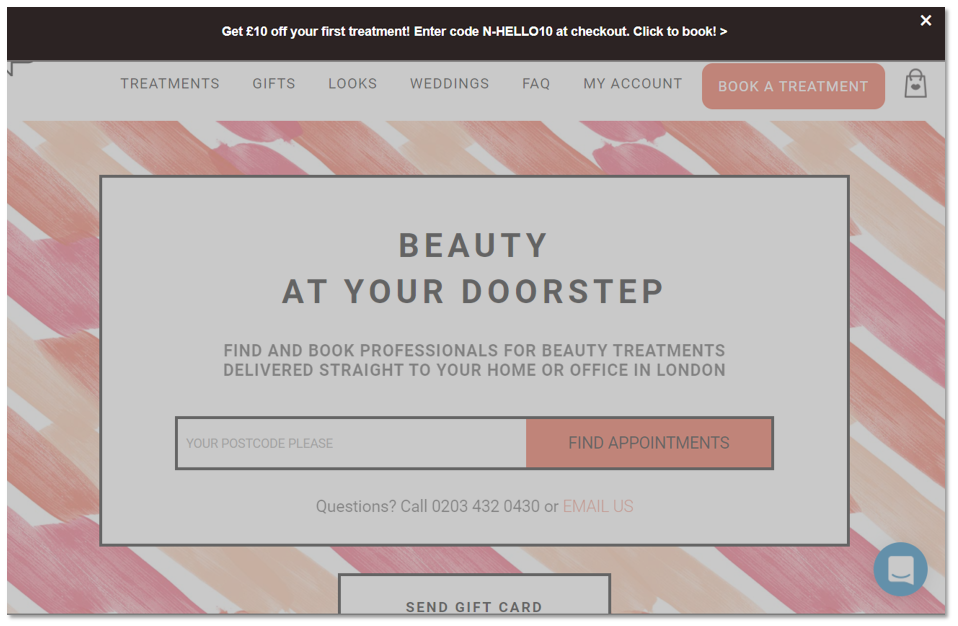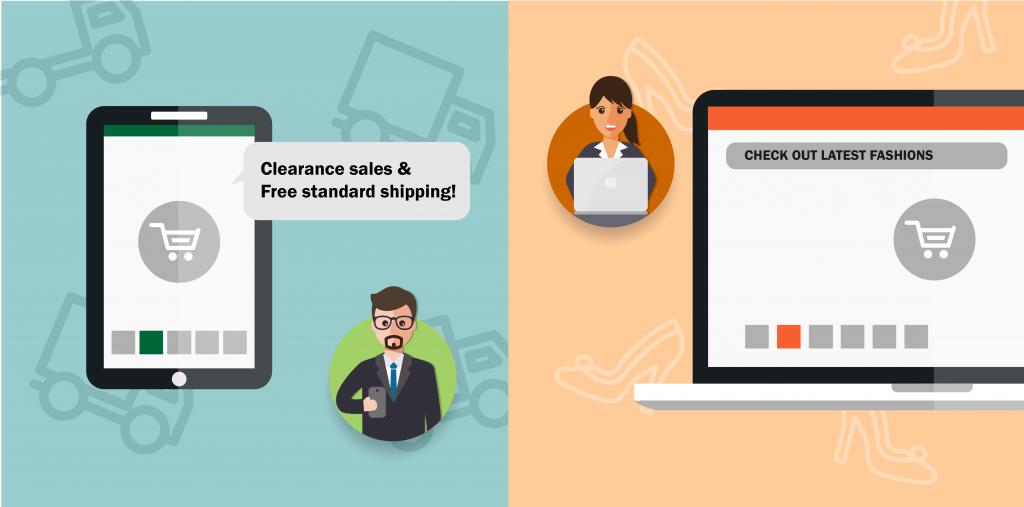The essence of retargeting is to increase conversions, grow leads, boost revenue and simultaneously keep all your visitors satisfied. If you think this is a tall order, then keep reading.
Onsite retargeting is a way to prompt a targeted message, either text or media format, to visitors as they are browsing the website. It differs from traditional PPC based remarketing in that you are engaging visitors with the goal of conversion before they leave the site. Successful on-site retargeting requires the capability to monitor visitor behaviors in order to derive insights on visitors’ preferences, and trigger an email campaign at the right time to nudge visitors towards a purchase. Equipped with the ability to act on such insight, retargeting becomes your trusted new partner.
In fact, it is such a key concept that all successful businesses on eCommerce platforms, like BigCommerce, Shopify, and Magento, have adopted on-site retargeting. Undoubtedly, you will get short and long term success with retargeting, which allows you to build more insights into your audience and gain more value for your business!
Recipes for success
As you may have guessed, the chances of getting a one-hit-wonder that will translate into sales from day one are slim. No one ever starts an online business having all the expertise at hand and an insatiable budget.
You constantly need to experiment and tweak to get results. However, there are a few general concepts to keep in mind as you take on on-site retargeting.
1. Design for customers at all stages
Onsite retargeting is a standard practice which will get you in the arena with the big players, why? Because it allows you to meet the audience’s demands in an optimal manner. The benefits apply to both sides. Your customers end up with a more refined shopping experience that potentially better suit their preferences. More conversions for less marketing spend or time invested for you.
Do not forget that on-site retargeting works for visitors, potential customers, loyal customers and so and so forth. The ultimate goal here is to exhaust your conversion rate potential while “leaving” every single one of your visitors fulfilled – unless they came to your website by mistake!

Stages of consumer decision journey. Source: Mckinsey.com
2. Combining CRM and Onsite retargeting
As you probably already know, customer relationship management (CRM) is a core aspect of sales and marketing as long as you want customers converting to returning customers, “loyal customers”, “evangelists” etc.
Sometimes a customer could be part of multiple segmentations in your database. Careful not to mix your messages as it will result in conflicting or negative customer experiences. A good marketing tool, such as ContactPigeon, will not only help you slice your audience accordingly but its intuitive interface will remind you to exclude customers who are subject to other potential conflicting messages.
It is, therefore, essential to link your CRM with ongoing on-site retargeting campaigns in order maximize the outcomes. By connecting key aspects of customer data, it enables more consistent touch points with customers across channels and also enhances the outcome of your paid campaigns. The combination of CRM and on site retargeting is truly a complementary relationship.
3. Onsite retargeting requires in depth personalization
Remember the last time you got a new device such as a laptop or a tablet, what did you do after the rush of happiness? Personalize your device!
Personalized offers and information is a company’s way to tell their potential customers: “I hear you!”
A popular way to personalize messages and offer for visitors is based on gender. The ‘look & feel’ of your messages or your landing page is a priority when gender parameters come into play. ContactPigeon nails it as it is designed with detailed customization options in mind which allow any eCommerce business to reach out to all potential customers no matter the segment or category they belong to.
4. Use onsite retargeting to strengthen the journey experience
Journey experience is another milestone in the era where billions of dollars are spent on a daily basis for online shopping. So even if you are a data-driven eCommerce owner and you are not certain that your UX/UI strategy will be profitable, onsite retargeting is your answer yet again as it can play a supplementary role to the UX.
For example, if you notice many customers leaving your eCommerce website in the middle of the purchase journey you might need to take action using a specific onsite retargeting tool. This could happen for a number of reasons depending on your target segments. One way to tackle it could be a dynamic pop-up offering a discount coupon for first-time shoppers. It could be also giving them an alternative offer, such as a complementary offer which will be more appealing or more self-explanatory to a particular segment.

On site retargeting does not have to be distracting, yet it works in a powerful way to generate conversions. Source: Prettly.com
5. Mobile experience is key
Most people always have a mobile on hand even if they have a PC or tablet available. Smartphones function as the extension of ourselves nowadays. Know which channels your customers use most and be certain that your messages designed for a PC or a Mac user will work equally well for a smartphone user.
Definitely focus on font size, width and length of your messages which ultimately produce the conversion optimization you seek for.
Welcome to the realm of ContactPigeon
Onsite retargeting opens up a whole new channel for lead generation and conversion that’s complementary to your digital advertising efforts! The sky’s the limit and you don’t have to feel cornered or boxed out ever again. Just figure out what exactly your business needs right now and leverage on the options…and if you thought that a good sales assistant does not exist in the online world, think again…
Or think ContactPigeon!




![Benchmarking Growth Strategies of Top Fashion Retailers [Study]](https://blog.contactpigeon.com/wp-content/uploads/2025/11/top-fashion-retailers.jpg)